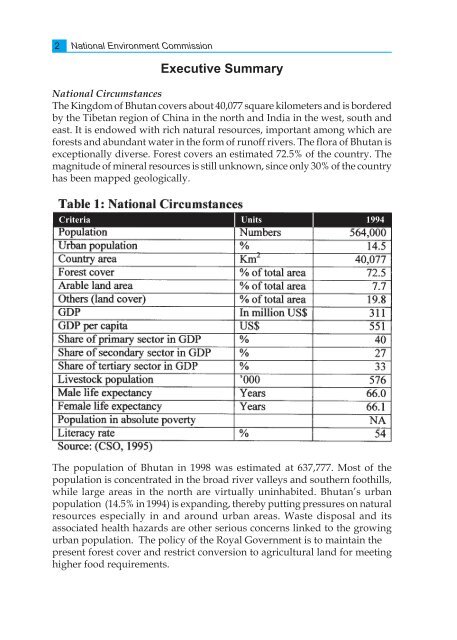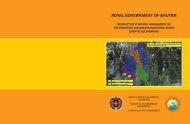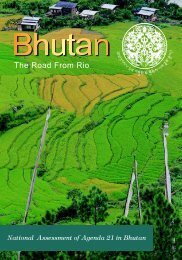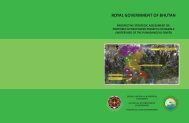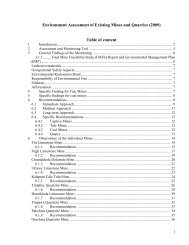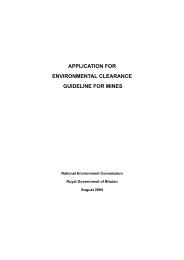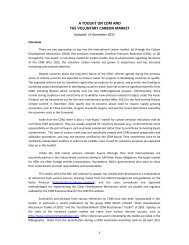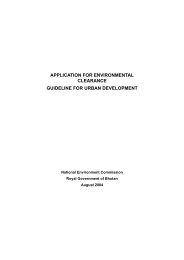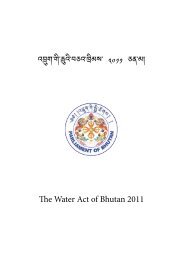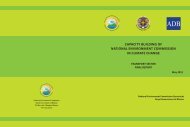Initial National Communication, under UNFCCC, September 2000
Initial National Communication, under UNFCCC, September 2000
Initial National Communication, under UNFCCC, September 2000
You also want an ePaper? Increase the reach of your titles
YUMPU automatically turns print PDFs into web optimized ePapers that Google loves.
2<br />
<strong>National</strong> Environment Commission<br />
48<br />
Executive Summary<br />
<strong>National</strong> Circumstances<br />
The Kingdom of Bhutan covers about 40,077 square kilometers and is bordered<br />
by the Tibetan region of China in the north and India in the west, south and<br />
east. It is endowed with rich natural resources, important among which are<br />
forests and abundant water in the form of runoff rivers. The flora of Bhutan is<br />
exceptionally diverse. Forest covers an estimated 72.5% of the country. The<br />
magnitude of mineral resources is still unknown, since only 30% of the country<br />
has been mapped geologically.<br />
Criteria Units 1994<br />
The population of Bhutan in 1998 was estimated at 637,777. Most of the<br />
population is concentrated in the broad river valleys and southern foothills,<br />
while large areas in the north are virtually uninhabited. Bhutan’s urban<br />
population (14.5% in 1994) is expanding, thereby putting pressures on natural<br />
resources especially in and around urban areas. Waste disposal and its<br />
associated health hazards are other serious concerns linked to the growing<br />
urban population. The policy of the Royal Government is to maintain the<br />
present forest cover and restrict conversion to agricultural land for meeting<br />
higher food requirements.


